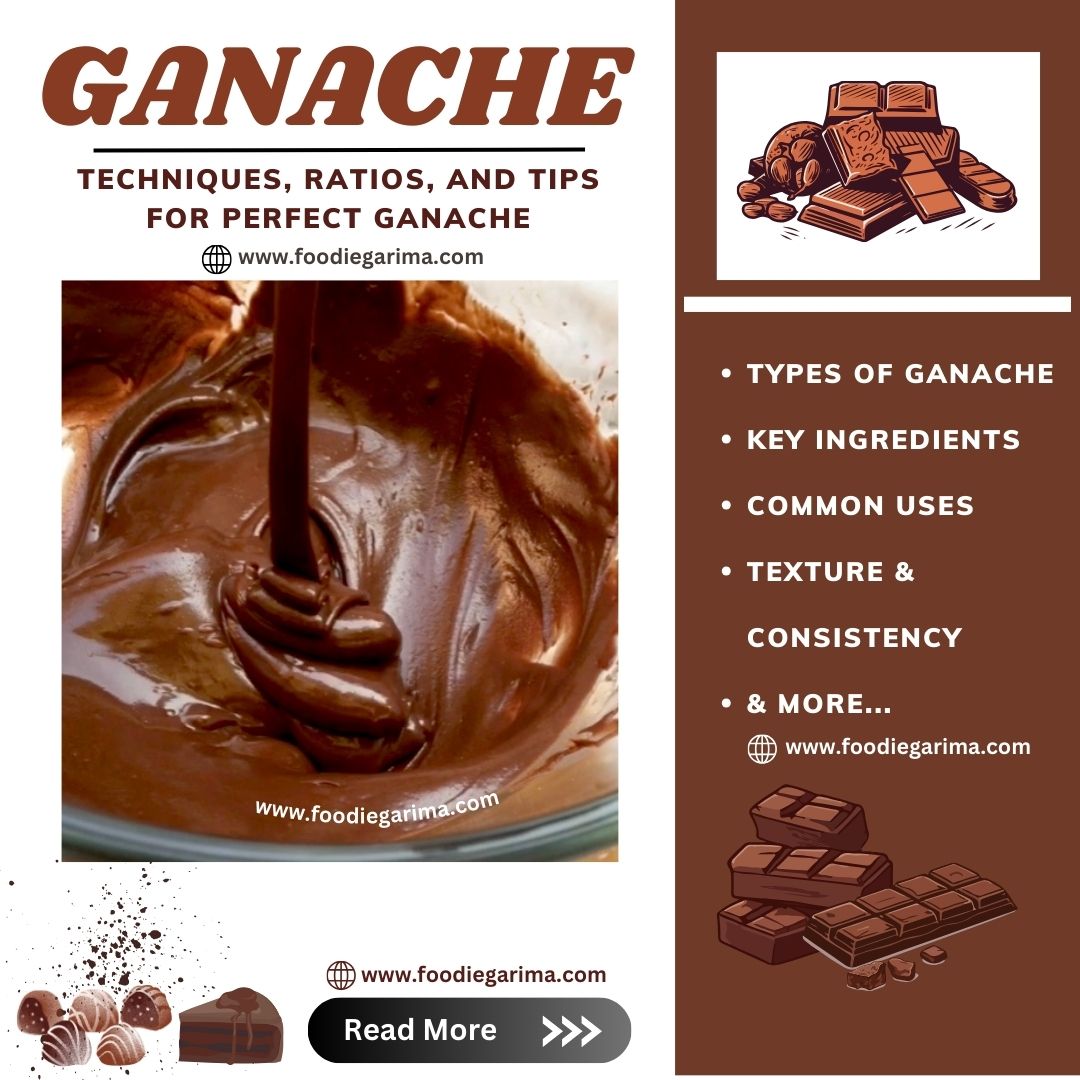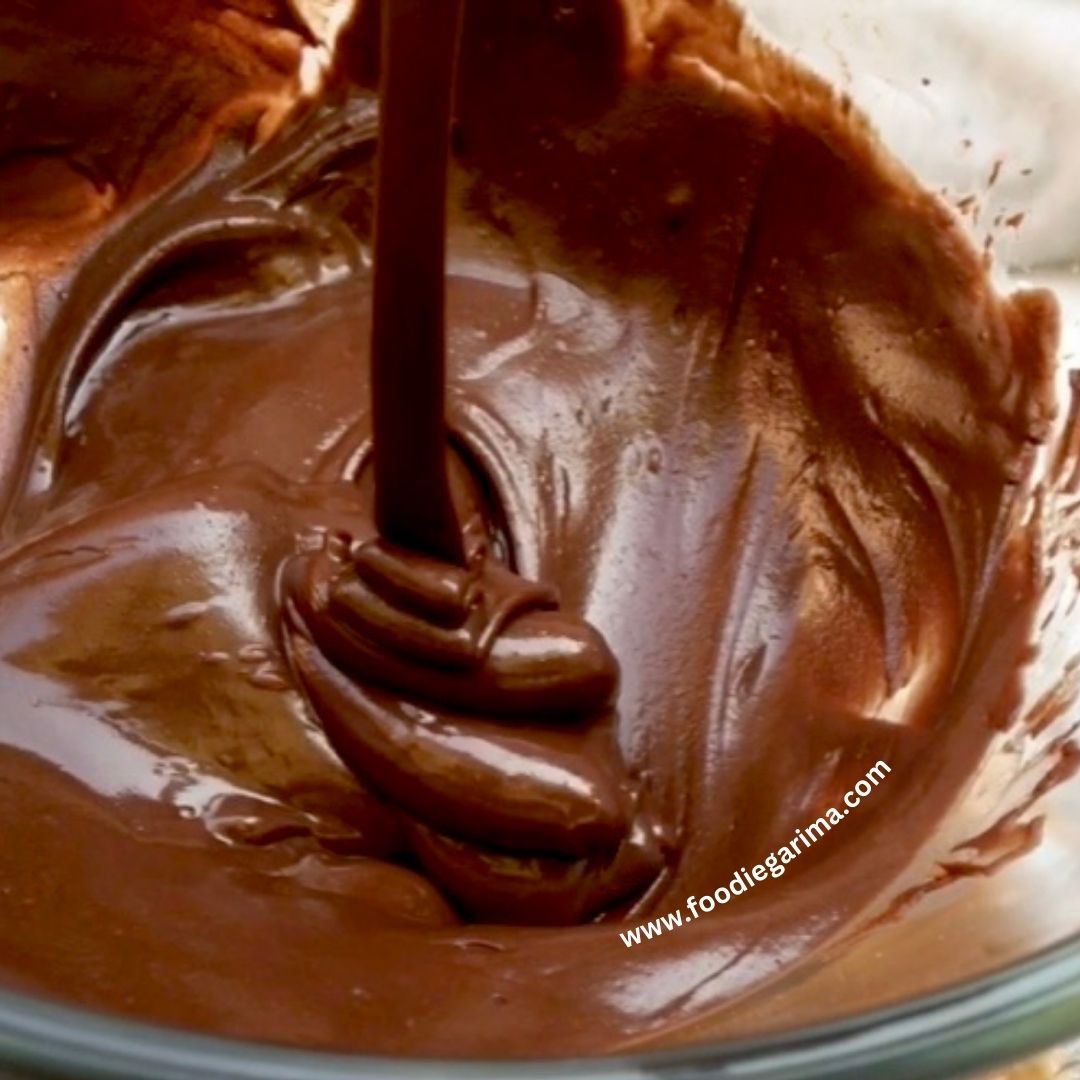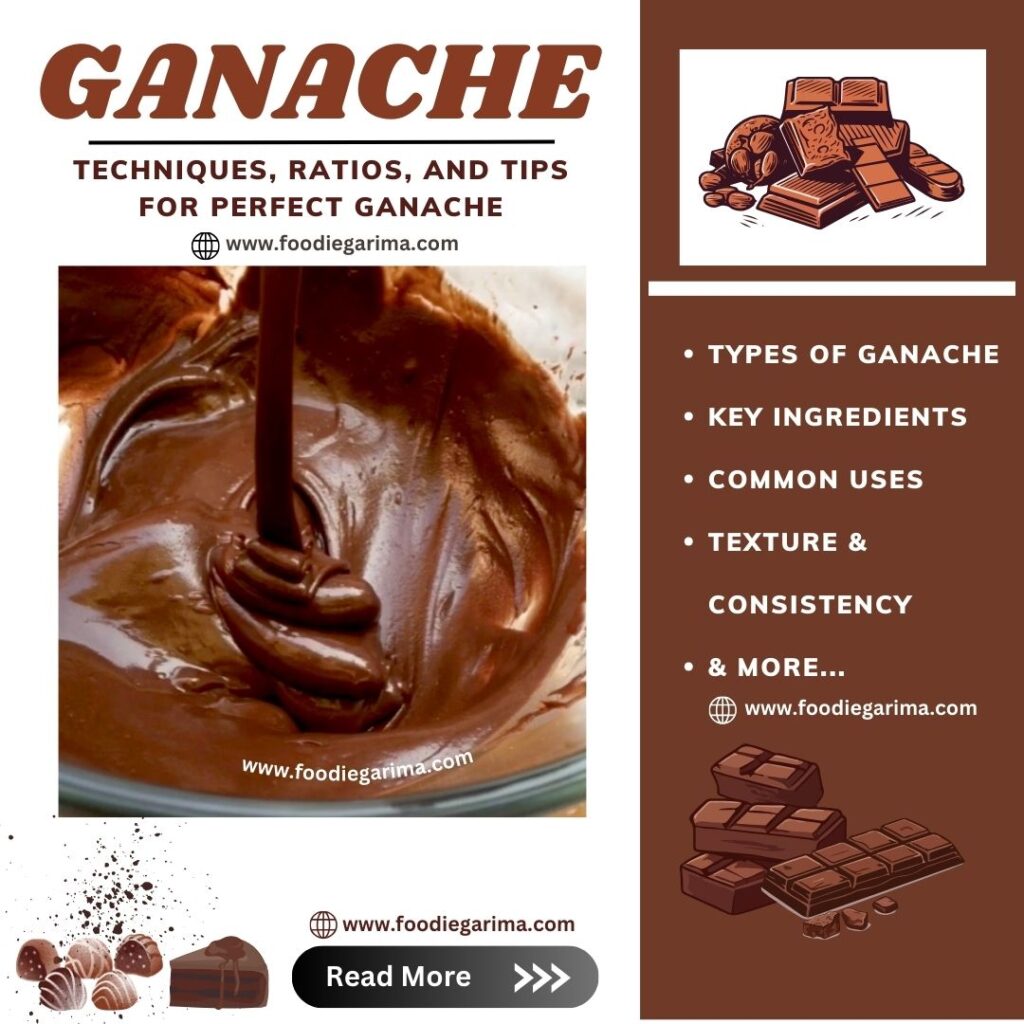11 January, 2025
What is Ganache ? Techniques, Ratios, and Tips

What Is Ganache?
Ganache is a rich, silky mixture of Chocolate and Cream, celebrated for its luxurious texture and versatility in desserts. Whether you’re a professional baker or a home cook, this chocolatey delight can elevate your creations to gourmet levels.

Key Ingredients of Ganache
The magic of Ganache lies in its simplicity. At its core, it requires just two ingredients:
- Chocolate – Opt for high-quality Chocolate with a Cocoa content that matches your preference. This can range from Dark, Milk, or White Chocolate depending on the desired flavor and sweetness. High-quality Chocolate ensures a smooth texture and rich taste.
- Heavy Cream – Cream adds richness and determines the consistency of the Ganache. For a thicker Ganache, use less Cream; for a pourable glaze, add more. Adjust the amount to achieve a pourable, spreadable, or thick consistency.
Optional Add-Ins for Flavor Enhancements:
- Butter – For added gloss and richness.
- Flavorings – Vanilla extract, Mint, Coffee, or Citrus Zest.
- Liqueurs – Brandy, Rum, or flavored Liqueurs for a boozy twist.
Even a pinch of Salt can enhance your Ganache. Experiment to find your signature flavor.
Why Use Heavy Cream in Ganache?
Heavy cream is essential for Ganache because:
- Fat Content: The fat in heavy Cream provides richness, smoothness, and stability to the Ganache.
- Silky Texture: It creates a creamy consistency that blends well with Chocolate.
- Versatility: Heavy cream can be adjusted for varying consistencies without compromising quality.
Common Uses of Ganache in Baking
Cake Coating and Decoration
Ganache makes cakes look and taste spectacular, offering a glossy finish.
Truffle Filling
Chilled Ganache can be rolled into balls and coated for delectable truffles.
Glazing Desserts
Pour over éclairs, donuts, or cookies for a glossy and indulgent topping.
Texture and Consistency of Ganache
Ganache’s texture is smooth, silky, and luscious, making it an absolute favorite in the world of desserts. Its consistency can vary depending on the ratio of Chocolate to Cream:
- Thicker Consistency: Perfect for Truffles and Pipeable fillings.
- Pourable Consistency: Ideal for Glazing Cakes and Pastries.
- Soft and Spreadable: Great for layering Cakes or filling Tarts.
At room temperature, Ganache retains a semi-firm consistency (either semi-solid or liquid) that is easy to spread or shape, depending on its Chocolate-to-Cream ratio.
Does Ganache Thicken When Cooled?
Yes, Ganache becomes thicker and firmer as it cools. The Chocolate solidifies when the mixture cools, making it suitable for different applications:
- Warm Ganache: Thin and pourable, great for glazing.
- Room Temperature Ganache: Semi-firm and spreadable, ideal for cake layers.
- Chilled Ganache: Firm and pliable, perfect for truffles or sculpting.
By understanding the science behind Ganache, you can master its preparation and create desserts with professional-level precision and flavor!
Types of Ganache
Ganache can be tailored to suit any dessert:
1. Dark Chocolate Ganache
Intense and bittersweet, perfect for sophisticated desserts.
Ingredients:
- 200 grams of semi-sweet or bittersweet Dark Chocolate (70% cocoa or more)
- 200 ml Heavy Cream
- Optional: 1 tbsp unsalted Butter for extra shine
This ratio of 1:1 (equal parts Chocolate and Cream) is ideal for a creamy and rich ganache that can be used as a filling, glaze, or spread.
2. Milk Chocolate Ganache
Sweeter and creamier, a hit with kids and adults alike.
Ingredients:
- 225 grams of Milk Chocolate
- 150 ml Heavy Cream (less cream is needed due to the higher milk content in chocolate)
- Optional: ½ tsp Vanilla extract for added flavor
Milk Chocolate requires a higher ratio of Chocolate to Cream because it contains more sugar and milk solids than Dark Chocolate. These additional components make milk chocolate softer (making it difficult to set stability and to handle) and less intense in flavor compared to Dark Chocolate. To achieve the desired consistency for Ganache, less Cream is used to ensure the mixture isn’t too runny and maintains enough structure. The higher proportion of Milk Chocolate also helps balance the sweetness and texture while retaining the creamy richness of the Ganache.
3. White Chocolate Ganache
Delicate and versatile, ideal for colorful desserts.
Ingredients:
- 200 grams of White Chocolate
- 100 ml Heavy Cream (white chocolate is softer, so less cream is required)
- Optional: A pinch of Salt or ½ tsp Citrus Zest to balance sweetness
4. Vegan Chocolate Ganache
Ingredients:
- 200 grams of Dairy-free Chocolate
- 200 ml Coconut Cream or Almond Cream
- Optional: 1 tsp Maple Syrup or Vanilla extract
5. Flavored Ganache (Coffee, Mint, Orange, etc.)
Ingredients:
- 200 grams of Chocolate (Dark, Milk, or White, as preferred)
- 200 ml Heavy Cream
- 1 tsp flavoring of choice (e.g., Espresso Powder, Mint extract, or Orange zest)
6. Boozy Ganache for Adults
Ingredients:
- 200 grams of Chocolate (Dark or Milk works best)
- 200 ml Heavy Cream
- 2 tbsp Liqueur (e.g., Baileys, Grand Marnier, or Rum)
Ratios for Different Uses
Ganache for Chocolate Truffles
- Ratio: 2:1 (200 grams Chocolate to 100 ml Cream)
- Reason: A higher Chocolate content creates a thicker mixture, ideal for rolling into truffles.
Ganache for Glaze
- Ratio: 1:1 (200 grams Chocolate to 200 ml Cream)
- Reason: The equal ratio results in a shiny, pourable ganache perfect for glazing cakes and desserts.
How to Make Ganache: A Step-by-Step Guide
Tools You’ll Need
- Heatproof bowl
- Whisk
- Saucepan
Step-by-Step Instructions
1. Preparing the Ingredients
Chop the chocolate finely to ensure smooth melting.
2. Mixing the Ganache
Heat the cream until it’s just about to simmer, then pour it over the chocolate. Let it sit for a minute before whisking until smooth.
3. Adjusting Consistency
Let the ganache cool for a thicker consistency or use immediately for a shiny glaze.
The Heating and Mixing Process
Why Is Cream Heated?
The Cream is heated to just below boiling (simmering) to melt the Chocolate evenly. This gentle heat ensures the Chocolate doesn’t burn and creates a smooth emulsion when mixed with the Cream.
Importance of Resting Before Whisking
Once the hot Cream is poured over the Chocolate, it should rest for 3–5 minutes (resting period depending on the quantity). This resting period allows the hot Cream evenly heats the bowl and softens the Chocolate, making it easier to whisk into a homogenous mixture.
What Happens If Whisking Is Done Without Resting?
If whisking begins immediately, the Chocolate may not have melted fully, leading to lumps or uneven texture. Blending right away can introduce air bubbles, lower the temperature, resulting in unevenly melted chocolate and a less smooth Ganache.
Tips for Perfect Ganache Every Time
Achieving the Right Consistency
Control the Cream-to-Chocolate ratio based on your intended use.
Fixing Broken Ganache
If the mixture splits, add a small amount of warm Milk and whisk vigorously.
Historical Origins
Ganache originated in France during the 19th century. Legend has it that it was a happy accident when an apprentice accidentally poured hot cream over chocolate. Today, it’s a cornerstone of French patisserie and beyond.
Evolution of Ganache in Modern Desserts
Modern bakers have reimagined Ganache in countless ways, incorporating it into Cakes, Pastries, and even Savory dishes with a twist.
Ganache is a simple yet transformative ingredient that opens up a world of culinary possibilities. Its rich texture and endless variations make it a favorite among dessert lovers and bakers alike. Whether you’re coating a cake or making truffles, mastering Ganache is your ticket to Chocolate heaven.
FAQs
1. What is the ideal Chocolate-to-Cream ratio?
For a classic Ganache, use a 1:1 ratio for semi-sweet Chocolate. Adjust for desired consistency.
2. How to make Ganache less sweet?
Use Dark Chocolate with a higher cocoa content to reduce sweetness.
